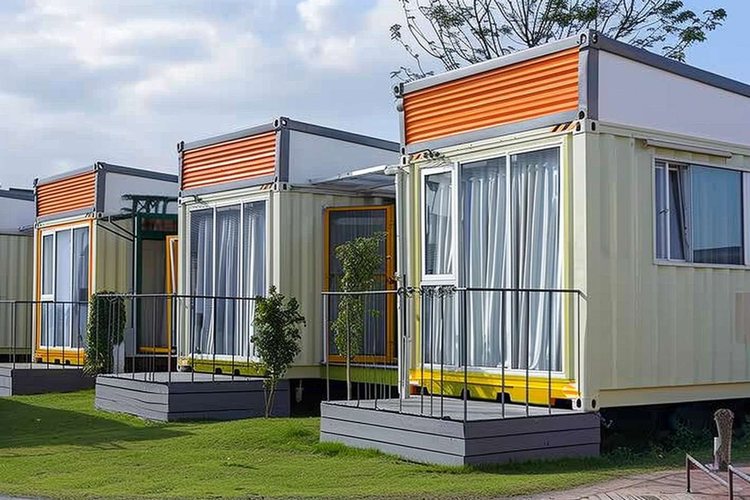Exploring Retirement Villages in the U.S.: Lifestyle, Community, and Care
Retirement villages in the United States provide independent living options for older adults in a community-focused setting. These communities often offer access to shared amenities, social activities, and varying levels of support, depending on individual needs. Understanding what retirement villages offer can help older adults and their families make well-informed lifestyle choices for the future.

Understanding Retirement Villages USA
Retirement villages in the United States represent a growing segment of senior living communities that cater to older adults seeking a balance between independence and support. Unlike traditional nursing homes, retirement villages typically offer a range of housing options, from single-family homes to apartments, within a community setting designed specifically for seniors. These communities often feature amenities such as fitness centers, dining facilities, recreational programs, and social activities that encourage residents to remain active and engaged. Many retirement villages also provide access to healthcare services, either on-site or through partnerships with local providers, ensuring that residents can age in place with appropriate support as their needs evolve.
The appeal of retirement villages lies in their ability to foster a sense of community while respecting individual autonomy. Residents can maintain their own living spaces and daily routines while benefiting from the security, convenience, and social opportunities that come with living among peers. This model has become increasingly popular as the baby boomer generation reaches retirement age, driving demand for senior housing options that prioritize lifestyle and wellness alongside care.
Independent Living for Seniors: What to Expect
Independent living for seniors within retirement villages is designed for older adults who are generally healthy and capable of managing their daily activities without assistance. These communities offer private residences with minimal maintenance responsibilities, allowing residents to enjoy their retirement without the burdens of homeownership such as yard work, repairs, or snow removal. Common amenities include housekeeping services, transportation, meal options, and organized social events that help residents stay connected and active.
Independent living environments emphasize freedom and choice. Residents can come and go as they please, pursue hobbies, travel, and participate in community activities at their own pace. The social aspect is a significant benefit, as many seniors find that living in a retirement village reduces isolation and provides opportunities to build meaningful friendships. Additionally, the presence of other seniors creates a supportive environment where residents can share experiences and look out for one another.
While independent living does not typically include personal care or medical services, many retirement villages are part of larger communities that offer continuum of care options. This means residents can transition to assisted living or memory care within the same community if their needs change, providing long-term peace of mind for both seniors and their families.
Senior Living Communities: Amenities and Activities
Senior living communities within retirement villages are known for their extensive amenities and activity programs designed to promote physical, mental, and social well-being. Fitness centers with age-appropriate equipment, swimming pools, walking trails, and group exercise classes help residents maintain their health and mobility. Many communities also offer libraries, art studios, woodworking shops, and computer labs that encourage lifelong learning and creative expression.
Social activities are a cornerstone of retirement community life. Organized events such as game nights, movie screenings, book clubs, and holiday celebrations provide regular opportunities for interaction and entertainment. Some communities also arrange off-site excursions to local attractions, theaters, restaurants, and cultural events, helping residents stay engaged with the broader community. Educational programs, guest lectures, and hobby groups further enrich the living experience by offering intellectual stimulation and opportunities to explore new interests.
Dining options in retirement villages often include restaurant-style meals prepared by professional chefs, with menus that accommodate various dietary needs and preferences. Communal dining spaces encourage socialization, while some communities also offer private dining rooms for family gatherings or special occasions. The combination of quality amenities and diverse activities helps residents maintain an active, fulfilling lifestyle well into their later years.
Senior Housing Options: Types and Considerations
Senior housing options within retirement villages vary widely to accommodate different preferences, budgets, and care needs. Common housing types include detached single-family homes, duplexes, townhouses, and apartment-style units. Each option offers different levels of space, privacy, and maintenance responsibility, allowing seniors to choose accommodations that best fit their lifestyle.
When evaluating senior housing options, it is important to consider factors such as location, accessibility, and proximity to healthcare services. Many retirement villages are situated in suburban or rural areas that offer a peaceful environment, while others are located near urban centers for easy access to shopping, dining, and cultural amenities. Accessibility features such as single-level living, grab bars, and wheelchair-friendly designs are essential for ensuring safety and comfort as mobility changes over time.
Financial considerations also play a significant role in choosing senior housing. Retirement villages may operate under different models, including rental agreements, entrance fee communities, or equity-based ownership. Understanding the financial structure, what is included in monthly fees, and potential additional costs for services or care is crucial for making an informed decision. Families should also inquire about refund policies, contract terms, and whether the community offers a continuum of care that can accommodate future needs.
Retirement Community Life: Social and Emotional Benefits
Retirement community life offers significant social and emotional benefits that contribute to overall well-being. Living among peers who share similar life stages and experiences creates a natural sense of camaraderie and belonging. Many residents report feeling less lonely and more socially connected after moving to a retirement village, as the built-in community structure facilitates regular interaction and friendship formation.
The emotional benefits extend beyond social connections. The security of living in a community with on-site staff, emergency response systems, and supportive neighbors provides peace of mind for both residents and their families. Knowing that help is readily available in case of an emergency reduces anxiety and allows seniors to maintain their independence with confidence. Additionally, the opportunity to participate in meaningful activities and contribute to the community through volunteer work or leadership roles helps residents maintain a sense of purpose and fulfillment.
Retirement villages also offer relief for family members who may have been concerned about an aging parent living alone. The supportive environment and access to resources allow families to enjoy their time together without the constant worry about safety or isolation. This shift in family dynamics can strengthen relationships and improve quality of life for everyone involved.
Accessing Care Services in Retirement Villages
While many retirement villages focus on independent living, access to care services is an important consideration for long-term planning. Some communities offer on-site healthcare services such as wellness clinics, physical therapy, and regular health screenings. Others have partnerships with local healthcare providers or home health agencies that can deliver services directly to residents as needed.
For residents who require more intensive support, many retirement villages are part of continuing care retirement communities that offer multiple levels of care on a single campus. This allows residents to transition from independent living to assisted living, memory care, or skilled nursing without leaving the community. This continuity of care model is particularly appealing for couples with differing health needs, as it allows them to remain close even if one partner requires more assistance.
Understanding what care services are available, how they are accessed, and what costs are associated with them is essential when evaluating retirement villages. Prospective residents should ask detailed questions about staffing levels, licensing and accreditation, and the process for transitioning between care levels if needs change. Visiting the community, speaking with current residents, and reviewing contracts carefully can help ensure that the chosen retirement village will meet both current and future needs.
Conclusion
Retirement villages in the United States provide a compelling option for seniors seeking a vibrant, supportive community that balances independence with access to care and amenities. From independent living environments that prioritize freedom and social engagement to comprehensive communities offering a continuum of care, these senior living communities cater to diverse needs and preferences. By understanding the types of housing available, the amenities and activities offered, and the care services accessible within retirement villages, seniors and their families can make informed decisions that support a fulfilling and secure retirement. As the demand for quality senior housing options continues to grow, retirement villages remain a valuable resource for those looking to embrace this life stage with confidence and joy.




